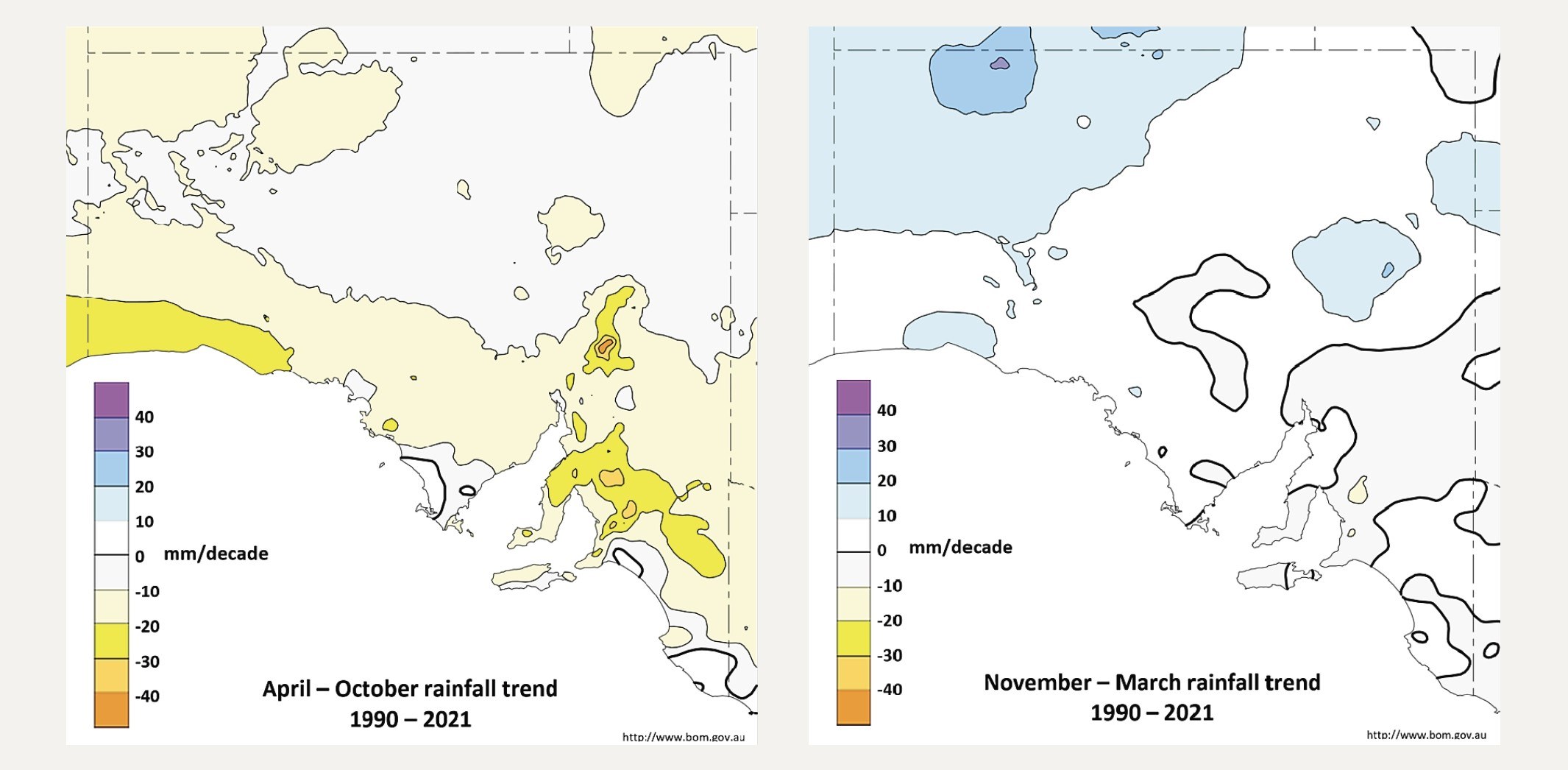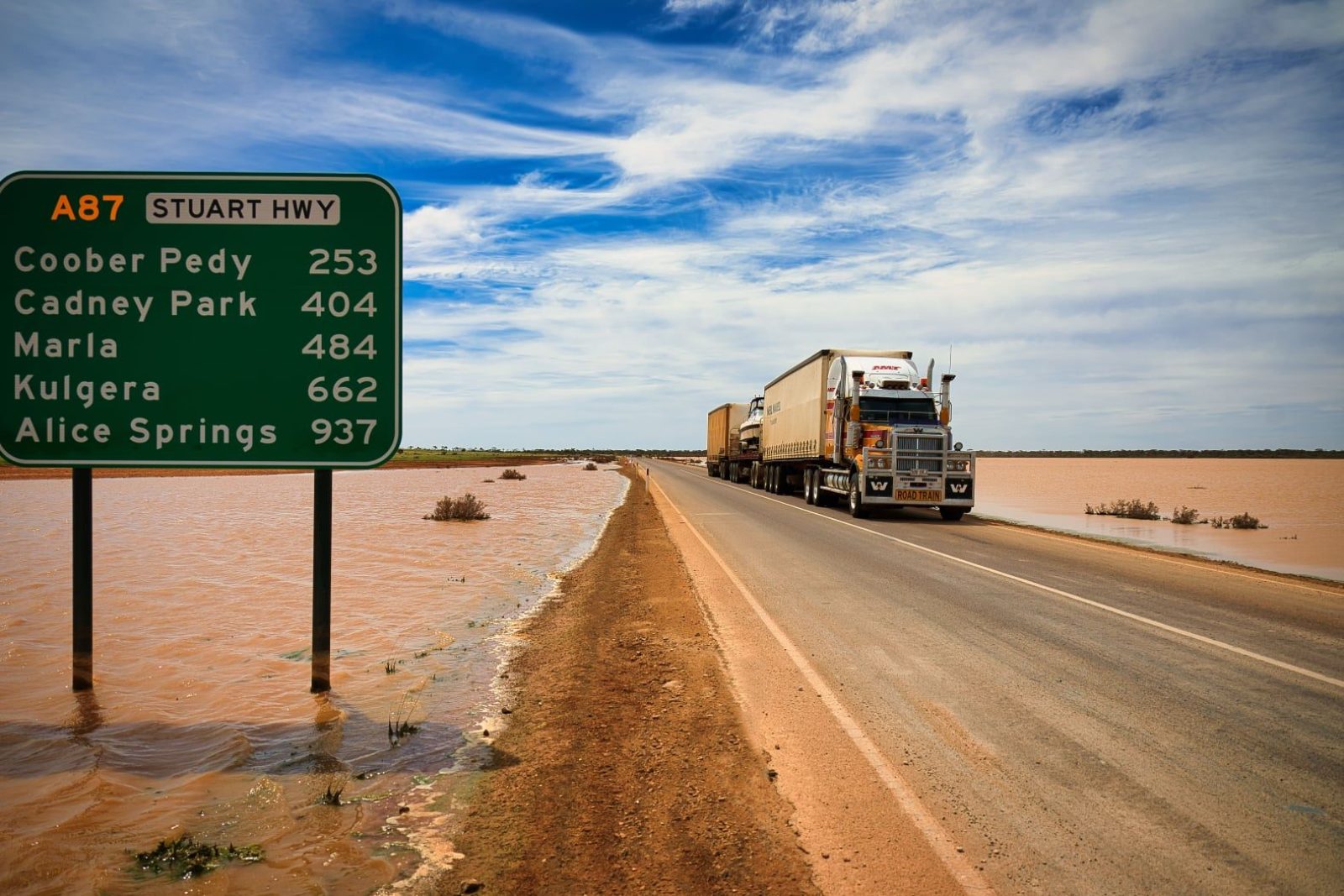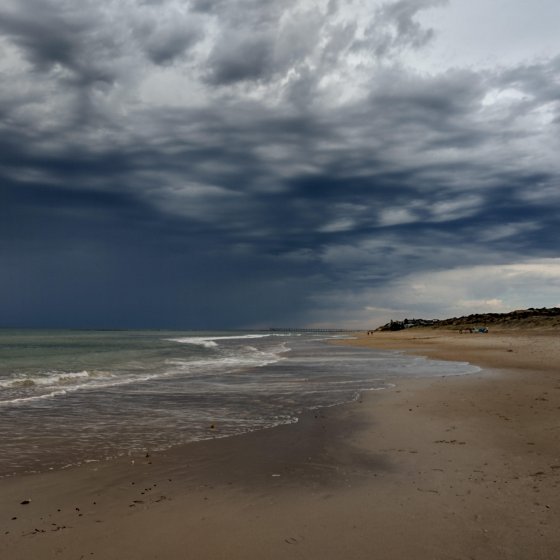Rainfall


Over more than 30 years, significant regional variation can be seen in seasonal rainfall trends across South Australia with winter rainfall decreasing in the south of the state and summer rainfall increasing in the north. Southern Australia has seen a 10 to 20% reduction in cool season (April to October) rainfall in recent decades.

Average annual rainfall across South Australia is projected to decrease by between 4% and 23% by 2050 under plausible emissions scenarios. This is expected to decrease even further by 2090 under medium or high emissions scenarios.
Changes in rainfall will impact biodiversity, water accessibility and our food production. It will also result in habitat changes for plants and animals, with less water available for vegetation growth and to supply our wetlands, watercourses and groundwater, and may increase bushfire risk. Less rainfall may also increase the likelihood of dust storms that may impact human health.
On the flip side, increases in the degree and/or duration of extreme rainfall events will increase the risk of flooding and impact infrastructure, damage food crops and result in substantial flows of water containing pollutants into our marine and surface waters. For example, short duration extreme rainfall events, such as the early 2022 floods in the state's north, cause significant damage to interstate and intrastate rail and road networks, and the long duration heavy rainfall events that occurred in the eastern states resulted in the 2022–23 River Murray floods.

